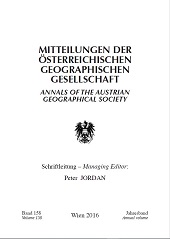
Mitteilungen der Österreichischen Geographischen Gesellschaft Band 158/2016, pp. 85-108, 2019/05/27
158. Jg. (Jahresband), Wien 2016

The theory of creative cities already entered the scientific arena in the second half of the 1970s, but its heyday took place around the turn of the new millennium and the subsequent decade when neoliberal policies dominated global and national economies. Urban development concepts appeared across Europe, in which cities tried to define themselves as creative cities and they started to rethink and develop their local economies accordingly. Around this time, top-down and bottom-up urban renewal processes were launched in Budapest, which are the focus of our study, and which are probably the most successful examples not only in Budapest but in Hungary overall.In the first part of our study we give a brief overview of the concept of creative cities and economy. The second part of the study provides a statistical analysis of development and current trends in the creative economy in Hungary and the Budapest agglomeration. The main part of the article provides the results of critical analyses of two residential neighbourhoods with special emphasis on creative dimensions. This includes the regulations affecting the two residential areas in question and how these affected the creative economy. The first example is the historical Jewish quarter of Pest, which is perhaps the most important tourist and commercial centre and nowadays functions as a party area, and the second is the Corvin Promenade project, which is currently one of the most successful urban development projects in Hungary. In our study, we try to show how old and new neighbourhoods can contribute to urban renewal processes and the politics, policiesand challenges, which affect their development.
Keywords: Creative city, creative economy, urban residential neighbourhoods, urban development, Budapest